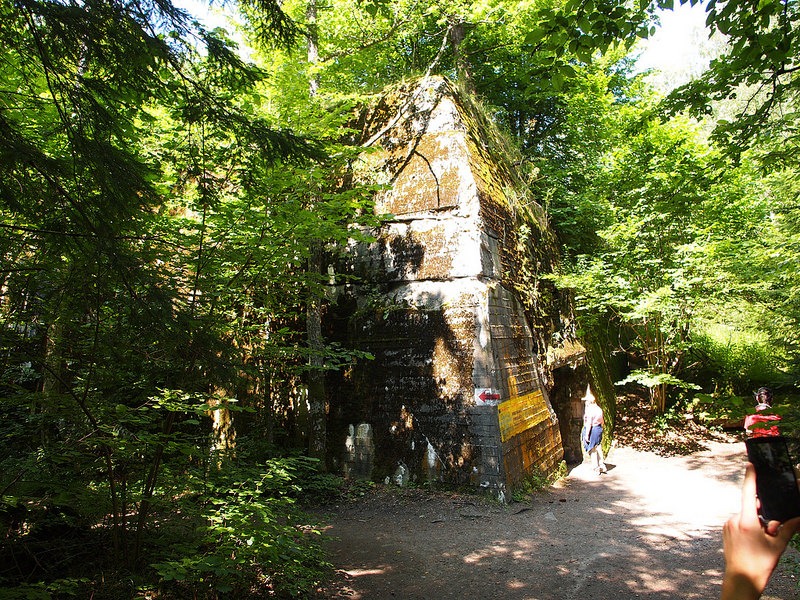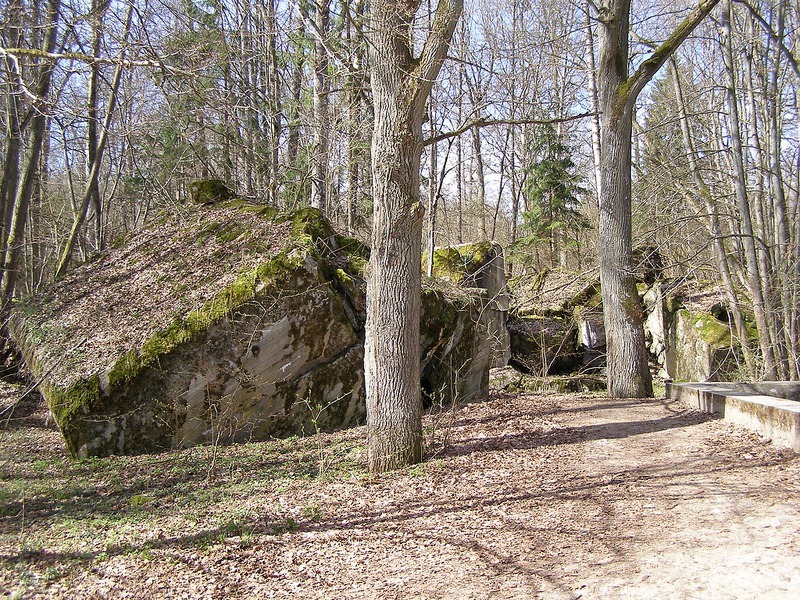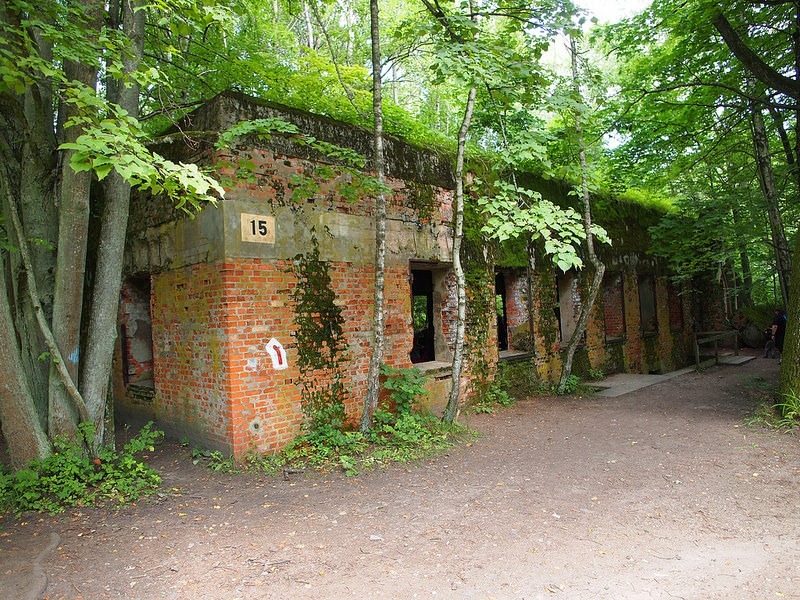Deep in the Masurian woods about 8 km from the small East Prussian town of Rastenburg, lies the ruins of Adolf Hitler’s most secretive bunker, one that he called Wolfsschanze or the Wolf’s Lair. This top secret, high-security bunker, whose name is derived from the self-adopted nickname of Hitler, was hidden deep in the forest far from any serviceable roads and urban areas. It was Hitler’s key military headquarters during the war, in which he spent more than 800 days planning the German army’s move eastwards.
Special care was taken in its construction and security. Buildings within the complex were camouflaged with bushes and artificial trees, and heavily guarded by multiple barriers of anti-aircraft guns, tanks, and land mines. Some of the walls of the bunkers were 2 meters thick. So paranoid was Hitler that he employed some fifteen or so women whose job was to eat Hitler's food before he ate it to make sure it wasn’t poisoned.

Photo credit: tomasz przechlewski/Flickr
“We had to eat it all up. Then we had to wait an hour, and every time we were frightened that we were going to be ill. We used to cry like dogs because we were so glad to have survived,” recalls Margot Wölk, Hitler’s only surviving food taster.
Despite being so well guarded, one of the most notable assassination attempts against Hitler was made in this very place. On 20 July 1944, German army officer Claus von Stauffenberg took with him a briefcase bomb to a conference meeting with the intention of putting it just a few feet away from Hitler. Unfortunately, a fellow German officer unwittingly pushed the briefcase away deflecting the blast away from Hitler. The Führer survived with only minor injuries. This famed assassination attempt was dramatized in numerous movies and television documentaries, the most widely known of which was the 2008 movie Valkyrie, starring Tom Cruise as Stauffenberg.
By October 1944, the Red Army had reached the borders of East Prussia prompting Hitler to leave Wolf’s Lair and ordering it to be destroyed. The complex was eventually blown up in January 1945. So hardened was the place that it took the Germans tons of explosives with one bunker alone requiring an estimated 8,000 kg of TNT. Even then, the buildings were only partially destroyed. It took over ten years for the surrounding ground to be cleared of over 54,000 land mines.
Today the site is a mess of toppled walls, crumbling bunkers and natural vegetation. Since the fall of communism in 1990 it has been attracting a steady stream of visitors. There is now a small exhibition room, and memorial plate for Colonel Claus von Stauffenberg.

Photo credit: tomasz przechlewski/Flickr

Photo credit: tomasz przechlewski/Flickr

Photo credit: petrOlly/Flickr

Photo credit: tomasz przechlewski/Flickr

Photo credit: petrOlly/Flickr

The view of destroyed interior of briefing room in Hitler's headquarter Wolfsschanze following the failed assassination attempt. Photo credit: unknown

Photo credit: tomasz przechlewski/Flickr

Photo credit: magro_kr/Flickr

Photo credit: tomasz przechlewski/Flickr



Rastenburg doesn't exist. It is Kętrzyn in present-day Poland.
ReplyDelete